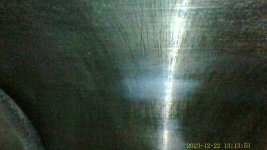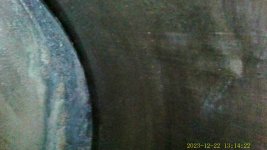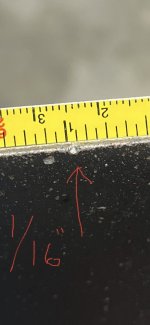Manchu16
Active Member
I figured I would post my experience breaking in my reworked #3 superior millennium nitrated cylinder.
Followed the Mattuck ground run process. Had to stop two of the cowled runs due to getting close to 350 CHT. Waited to cool down and finished them.
First flight saw CHTs about 50* hotter than the rest. 350 or so at WOT and full rich. Could just about get 2575 RPM. Have a 2600 placarded prop. Ran WOT for 1 hr, then 15 at 2400 then another 15 at 2575. Finished up with a fuel stop and a short, but hard 10 min run back to base. Total of 2 on the Hobbs. Used 1/2 qt of which some was on the belly from the breather. Oil stayed about 165 due to OAT. Flt was at 2500’
Flight 2 saw CHTs about 50* hotter than the rest until I started to lean to peak RPM (roughly 70* LOP). One of the cylinders came up to the same 360F egt as #3. Ran at 2550 for another hour then went back to 15 at 2450 and 15 at 2550. Oil was up to 188 during high rpm and 169 at the lower rpm. Flight at 2500’ MSL. Put another 1.7 on the Hobbs. Oil consumption was just under a half qt. Now down 1 qt since the start of ground runs. I haven’t seen anything about 385F on the CHTs and that was right after take off due to having to wait for two twins to depart with the wind at my back.
Pulled the plugs because I was getting some roughness during the post flight mag check. All looking good. The auto plug (bottom) had a yellowish hue on the electrode. Outside of that all normal and dry. Gapped and cleaned them all. Finding some case or pan leaks up front. Not the main seal. Always been very minor, but the hard running has been making them more evident. Checked the torque of the oil pan and the case half’s. One nut moved about a 16th of a turn.
Will post some of the borescope pics of the #3. Not an expert so would love opinions on if this is looking good.
Off for a few days and then after this next front pushes through going to put some mileage on the #3 and take a trip down to FL. Hoping to get 4 hrs in or so between 65 and 75%+. I used a power app, imputed the MP (27), RPM (2550) the alt (2500) baro (30.38) and the oat of 12c and I got that I was pushing 90.2% power. Not sure if I buy that, but great.
Followed the Mattuck ground run process. Had to stop two of the cowled runs due to getting close to 350 CHT. Waited to cool down and finished them.
First flight saw CHTs about 50* hotter than the rest. 350 or so at WOT and full rich. Could just about get 2575 RPM. Have a 2600 placarded prop. Ran WOT for 1 hr, then 15 at 2400 then another 15 at 2575. Finished up with a fuel stop and a short, but hard 10 min run back to base. Total of 2 on the Hobbs. Used 1/2 qt of which some was on the belly from the breather. Oil stayed about 165 due to OAT. Flt was at 2500’
Flight 2 saw CHTs about 50* hotter than the rest until I started to lean to peak RPM (roughly 70* LOP). One of the cylinders came up to the same 360F egt as #3. Ran at 2550 for another hour then went back to 15 at 2450 and 15 at 2550. Oil was up to 188 during high rpm and 169 at the lower rpm. Flight at 2500’ MSL. Put another 1.7 on the Hobbs. Oil consumption was just under a half qt. Now down 1 qt since the start of ground runs. I haven’t seen anything about 385F on the CHTs and that was right after take off due to having to wait for two twins to depart with the wind at my back.
Pulled the plugs because I was getting some roughness during the post flight mag check. All looking good. The auto plug (bottom) had a yellowish hue on the electrode. Outside of that all normal and dry. Gapped and cleaned them all. Finding some case or pan leaks up front. Not the main seal. Always been very minor, but the hard running has been making them more evident. Checked the torque of the oil pan and the case half’s. One nut moved about a 16th of a turn.
Will post some of the borescope pics of the #3. Not an expert so would love opinions on if this is looking good.
Off for a few days and then after this next front pushes through going to put some mileage on the #3 and take a trip down to FL. Hoping to get 4 hrs in or so between 65 and 75%+. I used a power app, imputed the MP (27), RPM (2550) the alt (2500) baro (30.38) and the oat of 12c and I got that I was pushing 90.2% power. Not sure if I buy that, but great.







